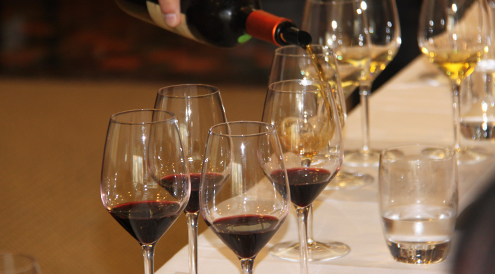
I came across a question recently that food and drink writer Fiona Beckett posed that intrigued me: “Why are some red wines so soft and soupy?” This was the exact question I asked myself while reviewing over 200 modestly priced (HK$250 or below) wines recently. The vast majority of the wines were broad on the palate with non-descript fruit, sometimes a bit syrupy with high alcohol and barely detectable acidity. The wines were clean and without faults, with tutti-fruity or confectionary fruit profile.
There is no question that over the past nearly three decades wines across the price spectrum have improved tremendously. I can’t remember the last time that Bordeaux produced a disastrous vintage or when Burgundy was so dreadful that we would pass up the chance to buy Rousseau or Domaine de la Romanee-Conti. Since 1982, the stars, or more accurately the sun, have shone down on fine wine. At the same time, huge improvements and understanding in viticultural methods and winemaking techniques have contributed to the consistency and quality of wines from around the world.
Wines in the modestly priced bracket improved dramatically thanks to temperature control, reliable packaged yeasts, vigilant hygiene and better understanding about the winemaking process. However, so many wines are often bland, uninspiring and without personality. Beckett calls these types of wines “the wine world’s equivalent of a cup cake.” I would go even further and call them vanilla flavoured cupcakes straight from a cake mix box.
One reason for this reliable but dull style is due to the commercialisation and expansion of the wine world. Many of the world’s largest wine companies source fruit from warmer regions within their respective countries where the growing season is dependable and often too hot. However, quantity is plentiful, obvious fruit flavours are easily extracted and sugar ripeness is never a problem. This is the perfect combination to make large quantity branded wines to be distributed around the world. Companies like Casella who make Yellow Tail and Bronco Wine’s “Two Buck Chuck” source fruit from the warm regions in Southeastern Australia and California respectively.
The responses that Beckett’s question generated were equally fascinating. Many winemakers chimed into the conversation with technical responses that were eye-opening. Jason Lett of Eyrie Vineyards in Oregon offered a formula on how to make “plush, succulent, easy drinking reds”: He suggested growing the grape variety of choice in a region warmer than where the variety naturally evolved so that there is minimal challenges in the vineyard; the low acidity in grapes from warm regions is easily countered by tartaric acid addition in the winery. High temperatures in the vineyard and winery increase microbial activities so spraying regularly with fungicide and using lots of sulphur dioxide would be common.
In the winery, the bag of winemaking tricks has expanded immensely. Popular items on the list include tannins for smoothness, enzymes for flavour extraction and special yeasts for high alcohol wines. Everything comes in a bag and is easy to measure and use, like the instructions on the back of a cup cake mix. Leaving a bit of unfermented sugar behind would be common, according to Lett, since this masks all kinds of harshness. To add oak flavour, inexpensive oak chips would be the best choice; this adds even more sweetness and increases vanillins and wood-sugar content, making the palate supple and the flavours sweet.
After alcohol fermentation, red wines undergo a malolactic fermentation where harsh malic acid is converted into softer lactic acid. This would be instigated by packaged lactic acid bacteria to further round out the wine and add a creamy middle. Finally, the wines would be fined to soften harsh tannins and then sterile filtered or chemicals added to kill all bacteria and yeast. This process to make soft, soupy reds that Lett describes doesn’t even include the use of many high-tech machines such as cryoextraction, reverse osmosis and spinning cone technology – all of which are widely available in major wine regions around the world.
At the other end of the spectrum, there is a movement toward more artisanal winemaking. Many top producers are shunning technology and going back to the vineyard for long-term improvements. Huge investments are being made by top wineries in the vineyard despite its cost. To ensure greater site expression, producers are experimenting with different density planting, looking at expensive organic or biodynamic methods of farming, replacing and uprooting vines to plant better quality plant material and changing the trellis system to create optimal leaf to fruit ratio. The impact on the final wine takes years to materialize with the total impact taking a decade or more. New wineries use gravity rather than pumps to move wine and the new micro-vats reflect the nuances of the vineyard.
For those at the top end of the spectrum, the critical question is whether the added expense and investment converts into a sufficiently higher quality and distinctiveness that justifies the higher pricing. At the lower end, wines are competing on price point in their respective categories and making soft, soupy, wine cupcakes may be the safest bet – reliability, consistency and inexpensive price tag are what the consumer expects. If I am paying less than HK$200 for a bottle of red wine, I would rather have soft and soupy versus tannic, bitter, disjointed and faulty which were common from inexpensive wines made in the 1970s and 1960s.
Reprinted with permission from South China Morning Post









